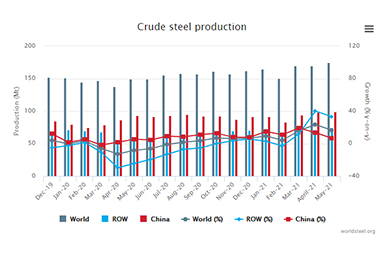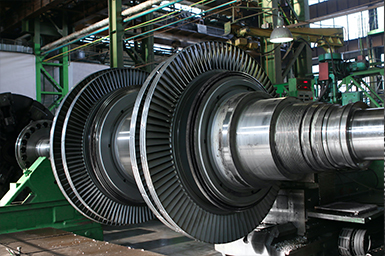Traditional power plants convert heat from fossil fuel combustion or nuclear fission into steam which is then used to rotate turbines that convert mechanical energy into electricity. Both these methods, while reliable sources of power, come with environmental impacts through emissions or radioactive waste.
But what if there was a way of producing this heat without the damaging by-products? This is the dream of fusion power, an ongoing experiment to produce vast amounts of energy through atomic fusion.
Identical to the processes that power our sun, fusion occurs when two hydrogen atoms smash together and fuse into a single helium atom. This generates huge amounts of energy without producing radioactive fission products.
Creating this process presents a serious engineering challenge, as the reactions must be precisely controlled in a space where massive amounts of energy are being generated.
The power of a star in a steel-built cage
At the ITER facility, construction is underway on the world’s biggest tokamak reactor. At the heart of this experimental machine, which is based on a Soviet model developed in the 60s, is a torus-shaped vacuum chamber.
Weighing 5,200 tonnes and with a volume of 1,400 m³ the vacuum chamber is by far the largest of its kind, making it easier for the physicists that operate it to control the reactions needed to generate viable fusion power.
ITER’s experiments will take place inside this steel-built vacuum vessel, which contains the fusion reactions and is hermetically sealed, acting as the primary safety containment barrier. Here hydrogen fuel is subjected to immense heat and pressure, turning it into the hot, electrically charged gas known as plasma.
This vacuum environment provides radiation shielding and supports plasma stability, while cooling water systems that are circulated between its double steel walls safely remove the heat generated while the reactor is active. This is vitally important as temperatures of between 150 and 300 million °C are required for fusion.
The power of magnetic fields
The doughnut shape of the interior allows the plasma particles inside to circle continuously without touching the walls. This superhot plasma is contained and controlled in the tokamak reactor by magnetic fields produced by 10,000 tonnes of superconducting magnets.
Able to produce stronger fields than conventional magnets when kept at temperatures of -269°C, ITER uses ‘high-performance, internally cooled superconductors’ in which superconducting strands are bundled together and contained in a structural steel jacket.
This means of generating magnetic fields is also cheaper and less-energy consuming than alternatives, making it the only viable option for the massive magnet systems needed to support fusion power.
The vacuum vessel and its superconducting magnet system are all contained within the ITER cryostat, which provides an ultra-low temperature vacuum space. At 16,000 m³, it is the largest stainless steel high-vacuum pressure chamber ever built.
The extreme temperature differences contained in the reactor make stainless steel an ideal choice. Able to maintain performance at high and low temperatures, steel’s high ductility and toughness make it an irreplaceable part of ITER.
With the tokamak expected to be up and running by 2025, fusion physicists hope that this will be a game changer for energy generation. While the prospect of near-limitless clean energy remains beyond the horizon, it is clear that if we are to achieve commercial fusion it will be the enduring power of steel that allows us to harness it.








 EXPOGROUP Supports The"GO GREEN"
EXPOGROUP Supports The"GO GREEN"